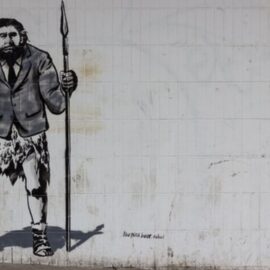

This article is an excerpt from the Shortform book guide to "Black Box Thinking" by Matthew Syed. Shortform has the world's best summaries and analyses of books you should be reading.
Like this article? Sign up for a free trial here .
What is rational thought? Where did the concept of rational thought come from?
Black Box Thinking answers the question: what is rational thought? The book talks about rational thought and how the Greeks embraced mistakes as crucial to learning. Before this period, worldwide views came from the gods and weren’t challenged.
Keep reading to answer the question: what is rational thought?
Phase #1: Defending “Divine Knowledge” (Ancient Past to ~600BC)
Human cultures have always had worldviews—ideas about how the world works—but they haven’t always promoted learning. No one knew the answer to the question: what is rational thought? When we lived in hunter-gatherer tribes and in the early civilizations that followed, many worldviews were dogmatic and thought to come from the gods—which meant they weren’t to be challenged.
For example, Chinese paganism holds that the Dragon King (龍王 Lóngwáng) controls the rains and the creatures of the seas; no one would challenge this belief for fear of invoking his wrath and losing loved ones at sea.
(Shortform note: While we often hear about the negatives of tribalism, tribes helped humans to cohere, coordinate, and survive for thousands of years. Today, psychologists acknowledge that tribes give people a sense of belonging, a better understanding of their purpose, and a valuable social support network. So while dogmatic beliefs might negatively affect societal progress, they aren’t all bad. Overcoming the negatives of tribalism likely means embracing the positives—forming tribes is in our DNA, whether we like it or not.)
Primarily the “priest class” defended these myth-based worldviews, treating them as sacred and infallible wisdom. In addition, the power elites would suppress dissenters with violence or banish them, Syed says. This kept their “truth” undisturbed from generation to generation.
For example, Jesus of Nazareth—the historical Jesus—was crucified because the ruling Romans saw his novel religious teachings as a threat to their established order (Pagan religion, Roman law and ethics, and so on).
Because those in power treated alternative perspectives as threats, they lost the opportunity to learn. In other words, their worldviews remained static because they didn’t acknowledge the possibility that they had flaws. No one wondered: what is rational thought?
(Shortform note: While powerful leaders have always had their sycophants, modern echo chambers exacerbate the problem. Because our information streams are often personalized—think your curated social media feeds—and because we surround ourselves with like-minded thinkers, it’s easier than ever to inadvertently avoid alternate perspectives. This causes exactly the stagnation that Syed describes: When nothing challenges the dominant view, a group’s thinking will fall into a rut. To avoid this, actively seek out people who may disagree with you, and read reputable information from both sides of an issue.)
Phase #2: Rational Thought Arrives (~600 BC to ~300 BC)
What is rational thought? Before 600 BC, it is likely no one knew. This “divine knowledge” paradigm didn’t last forever. With the dawn of the classical Greek period, thinkers such as Pythagoras, Socrates, and Aristotle developed rational thought. They treated ideas as speculative and developed them through a back-and-forth exchange of differing perspectives.
Under this paradigm, Syed explains, the Greeks embraced errors as integral to learning. When discourse revealed the flaws in an argument, the thinkers would seek to improve it. In this way, the tradition of dogma began to fall away, and rational, scientific thought began to emerge.
| Rationality Versus Empiricism Although Syed conflates rationality and empiricism, they’re distinct approaches to scientific thought. Both have their roots in the classical Greek period he describes, and they have long challenged each other on the proper way to establish valid knowledge. In short, empiricists hold that all knowledge derives from external sensory experience (our five senses) and internal sensory experience (observation of mental phenomena). In other words, you come to know something by sensing it, and in that way discover the laws of the natural world. In contrast, rationalists argue that reason enables us to intuit and deduce concepts that have no basis in sensory reality (a priori knowledge). For example, a rationalist might say that a logical statement, “13 is a prime number less than 22,” couldn’t come from sensory experience. Rather, it’s an abstract formulation of knowledge that depends on intuited insights about numbers and mathematics. Rationalists and empiricists tend to agree that some knowledge comes from such abstract reasoning, though other knowledge undeniably comes from sensory experience—for example, you know water and wetness by its feeling. If we “both-and” the two schools of thought, it’s clear that both abstract reason and sense-based reason have a place in scientific thinking. |
Phase #3: The Church Battles Rational Thought (~300 BC to ~1600 AD)
What is rational thought doing to help progress society? Though rational thought briefly flourished, the Western worldview receded into dogma after the classical Greek period. Syed explains that the church combined Christian strictures with a dogmatic interpretation of Aristotle’s work, and it punished dissenters.
This resurgence of the “divine knowledge” paradigm dominated until around the 17th century, when thinkers (Syed chiefly credits Francis Bacon, who helped develop the scientific method) revived the scientific mindset. Though they met resistance—Galileo, for example, was put under lifetime house arrest for challenging Christian cosmology—the rational tradition found its footing and scientific progress resumed.
What is rational thought’s pivotal moment in history? The work of Galileo, Bacon, and others led into the Age of Enlightenment in the 17th and 18th centuries—Europe’s return to rational, scientific thought.
(Shortform note: In any age, the dominant worldview tends to become more or less dogmatic. Today, science is partially guilty of this, as the church was in medieval times. “Scientism” is a quasi-religious view, held by some scientists, that purports science is the only valid way to know things. In “The Folly of Scientism,” Austin Hughes argues that scientism constitutes an attempt to extend the scientific method into areas of philosophy that it simply can’t comment on. This unflinching belief in the ultimate power of science, he says, is much like religious superstition. To counter this trend, he argues—as Syed describes above—that we need a resurgence of reasoned, Enlightenment-style thinking that clarifies the strengths and limitations of scientific methods.)

———End of Preview———
Like what you just read? Read the rest of the world's best book summary and analysis of Matthew Syed's "Black Box Thinking" at Shortform .
Here's what you'll find in our full Black Box Thinking summary :
- How an organization’s culture and systems either promote or prevent learning
- The steps for learning from failure in our complex world
- How to shift mindsets around failure to promote a learning-oriented institution






